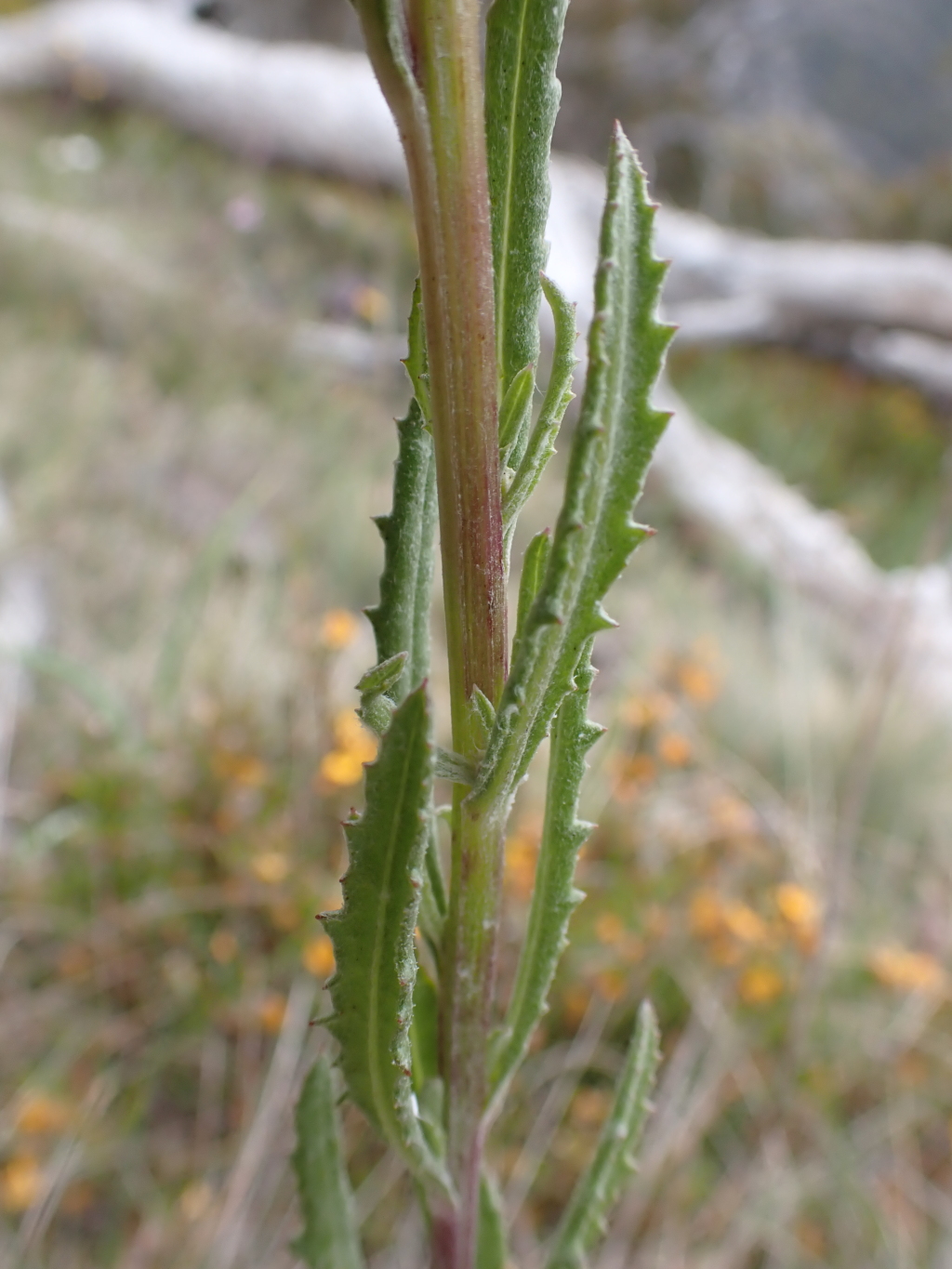Senecio nigrapicus
I.Thomps. Black-tip FireweedErect, shortly rhizomatous perennial to 80 cm high; stems coarse-hairy in lower third becoming slightly appressed-cottony or glabrous upwards. Mid-stem leaves in middle third of stems pseudopetiolate, attenuate at base, narrow-oblanceolate or very narrow-elliptic, 7–10 cm long, 5–15 mm wide, not dissected or lobate with remotely denticulate or dentate margins; upper surface sparsley scabridulous or glabrous; lower surface sparsely coarse-hairy, cobwebby or glabrous. Upper leaves attenuate or sometimes auriculate at base, narrow-elliptic or linear, margins rolled giving an entire appearance, glabrous or slightly cobwebby. Inflorescences often with 30–100 capitula; capitula non-radiate; involucre cylindric or narrowly campanulate, 6.0–8.0 mm long, glabrous; bracts 12–14, conspicuously black-tipped; bracteoles present; florets 40–60, bisexual and female. Cypselas narrow-oblong-ellipsoid or slightly lageniform, 2.5–3.0 mm long, red-brown or brown, papillose-hairy in dense lines; pappus of slender hairs 5–6 mm long, deciduous. Flowers summer–autumn.
EGU, HNF, MonT, VAlp. Rare, mostly in montane to subalpine forest and snow-gum woodlands (e.g. Snowy Range north of Licola, Mt Magdala, Omeo, Benambra-Wulgulmerang area).
The black tips to the involucral bracts are characteristic of this species. Young leaves are commonly heavily invested with fine cottony hairs but these are usually soon lost as leaves mature.
 Spinning
Spinning

